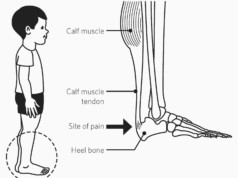People are continuing to live longer, and healthcare costs are sure to remain on the rise. Thankfully, artificial intelligence and machine learning can simplify the processes in the insurance market and help reduce costs for both customers and insurance providers.
Here, Dr. Joel Arun Sursas discusses how AI improves efficiency in providing healthcare coverage to as many patients as possible.
Like all insurance providers, health insurance companies must manage costs in comparison to expenses to stay in business. Many components of health insurance overhead are outside a provider’s control.
Providers are becoming more adept at supporting patient health while reducing cost and planning specific health care treatment.
Data Management
The modern world revolves around the accumulation and management of data. AI is critical to managing and analyzing the vast volume of patient care data we are now able to collect and store.
In addition to traditional medical record formats, the Internet of Things allows for data collection directly from patients through wearable tech and home-based sensors.
The amount of patient data we can currently collect needs careful analysis to be useful; AI provides the methods and algorithms needed to understand data and make intelligent predictions and observations. [1]
Data Processing
Medical records have always been challenging to read effectively. Digital processors and even human users find it difficult to handle data that is not correctly arranged or is inconsistently formatted.
AI is developing language models to find information accurately and efficiently and organize it so other AI algorithms can adequately analyze and interpret it.
This AI processing reduces the substantial majority of work time needed by human users to sort and pull relevant records. [2]
AI and Visual Record Recognition
Image recognition algorithms have advanced dramatically in recent years. AI has outpaced human capabilities regarding image and pattern recognition and will only improve.
AI can make confusing records legible, and algorithms can examine medical images and compare them to vast databases of similar photos. Errors can be easily tagged, and unseen issues are detected. [3]
Consumer Managed AI Applications
Insurance providers are using AI to engage with customers through a variety of tasks traditionally provided by human employees.
Patients can engage with AI programs and bots to file claims, check on benefits, apply for coverage, and access almost any other ordinary customer interaction.
AI-based customer engagement provides both a much more efficient and inexpensive experience for both insurer and patient and also ensures greater accuracy and speed in assisting customers. [3, 4]
AI allows health insurance providers to manage their bottom line while greatly enhancing patient outcomes and management of medical conditions.
When patients receive the best possible guidance through machine learning and analysis through AI, their investment in their healthcare is improved, and insurance companies can reduce avoidable covered expenses.
AI also provides terrific support for insurance companies in managing and handling their internal data.
Author Bio:
Dr. Joel Arun Sursas is a Medical Doctor and Health Informatician who designs and implements the latest technological developments to solve administrative problems in healthcare. His primary focus is on developing technological advances between doctors and engineers to improve patient outcomes through improved monitoring while protecting patient privacy. Dr. Sursas’s interest in the field of Medical Informatics emerged when he began working as a Project Officer for PACES — the Patient Care Enhancement System for Singapore Armed Forces (SAF). At the SAF, he worked with multiple doctors and engineers on the largest Electronic Medical Record (EMR) system in Singapore and also developed a data analytics platform to assess epidemiological data throughout the system. Dr. Sursas is currently serving as Head of Clinical Affairs for Biorithm, a medical device start-up company working to move fetal surveillance from hospitals into home settings, revolutionizing the obstetric practice globally.
References
- Emerjf, Stat News, Big Data in Healthcare – 4 Data Management Software with AI Capabilities, November 22, 2019, Retrieved from https://emerj.com/ai-sector-overviews/big-data-in-healthcare-4-data-management-software-with-ai-capabilities/
- Forbes, Can AI Cure What Ails Health Insurance?, February 11, 2019, Retrieved from https://www.forbes.com/sites/insights-intelai/2019/02/11/can-ai-cure-what-ails-health-insurance
- The Next Web, 3 ways AI is transforming the insurance industry, February
- 24, 2020, Retrieved from https://thenextweb.com/growth-quarters/2020/02/24/3-ways-ai-is-transforming-the-insurance-industry/
- Healthcare Finance News, How health insurance companies use AI to make consumers healthier, November 9, 2018, Retrieved from https://www.healthcarefinancenews.com/news/how-health-insurance-companies-use-ai-make-consumers-healthier











